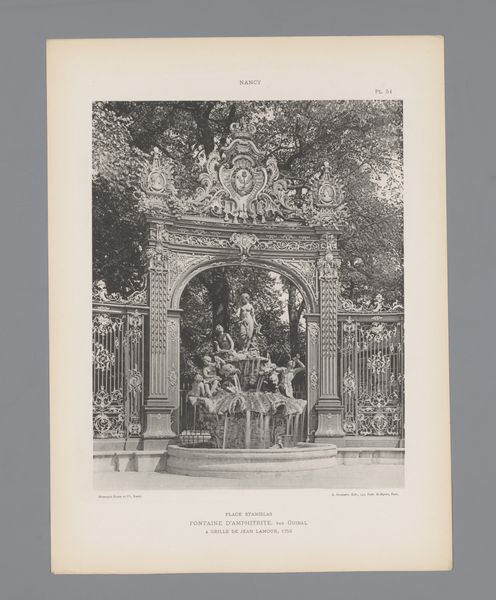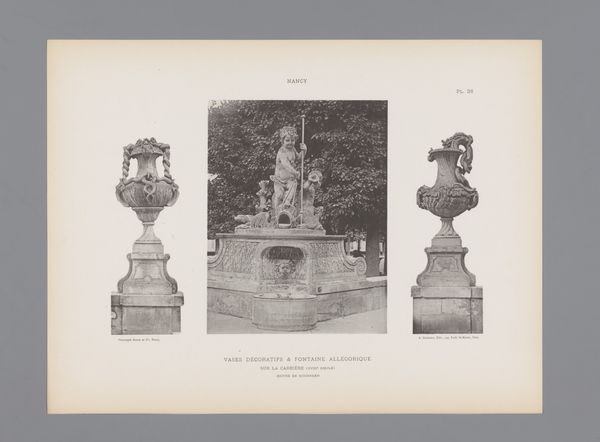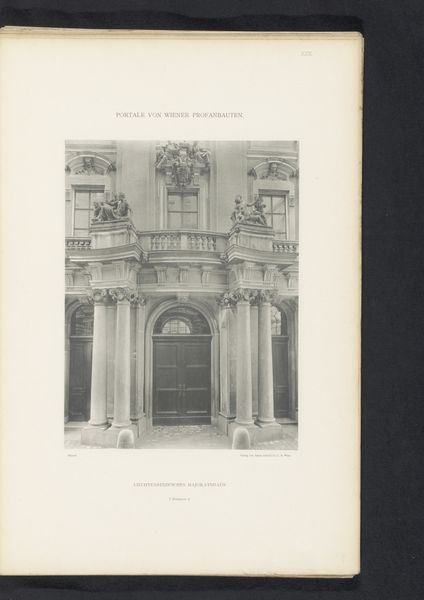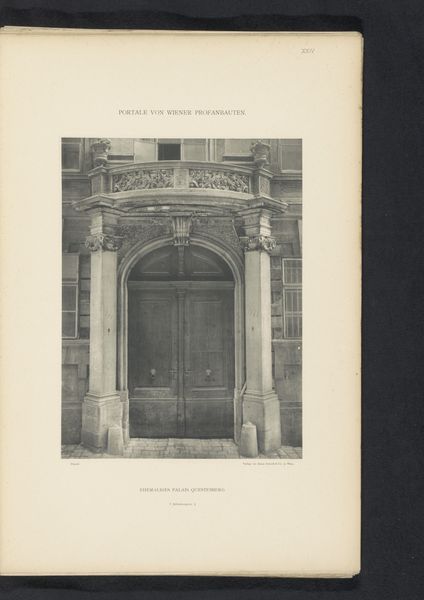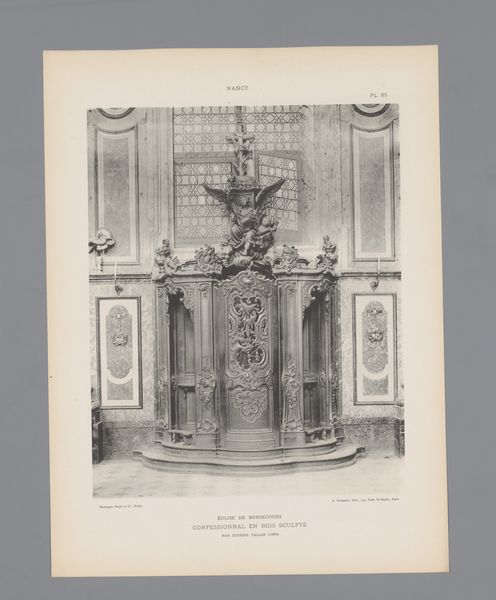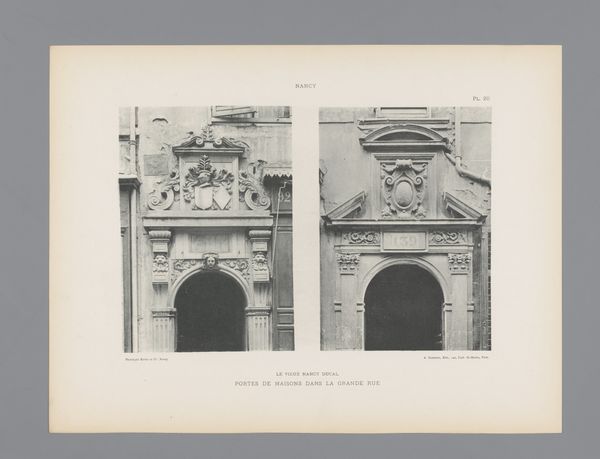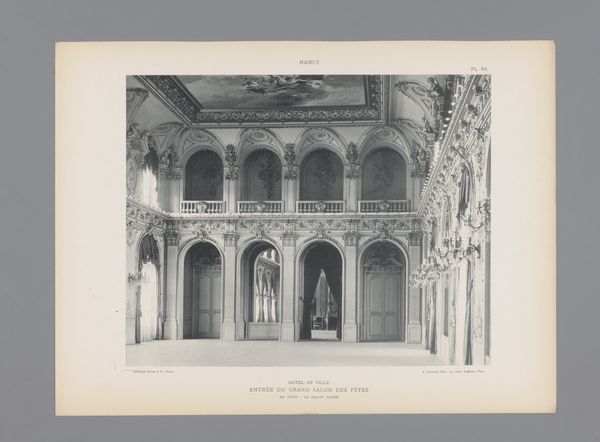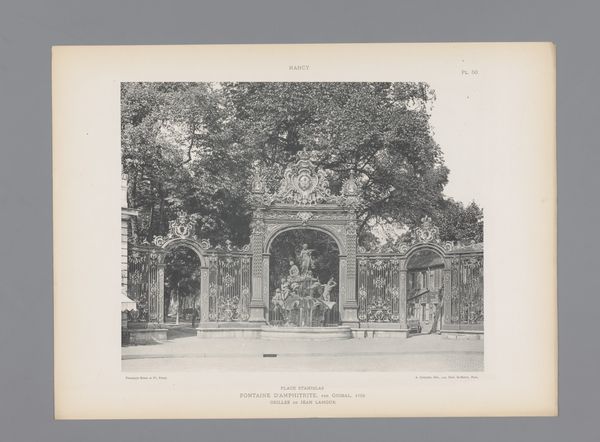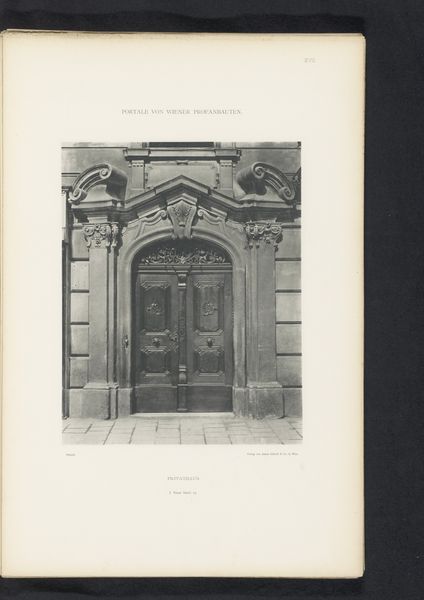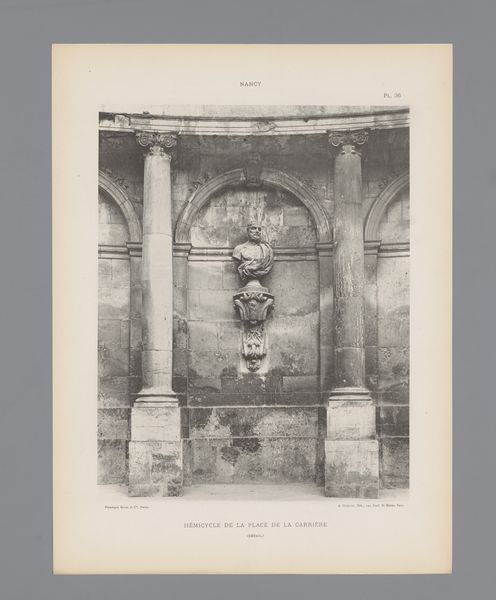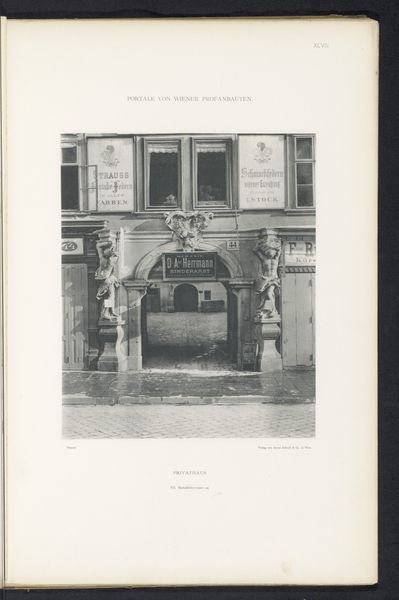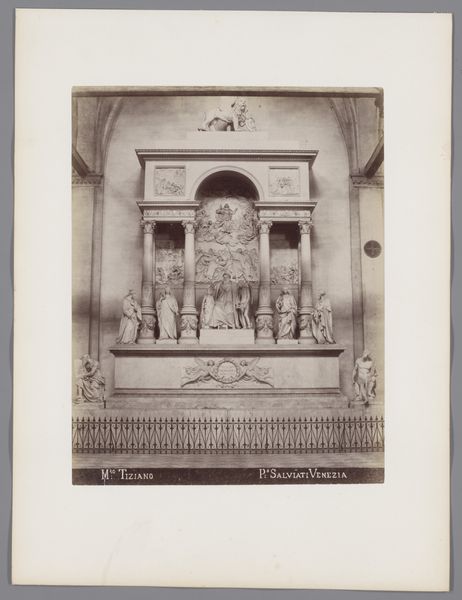
Standbeeld van Jaques Callot en bustes van Israël Silvestre en Sint Urbanus op de westzijde van de Arc Héré te Nancy before 1896
0:00
0:00
Dimensions: height 298 mm, width 401 mm
Copyright: Rijks Museum: Open Domain
Curator: Before us is a photographic print dating from before 1896, showing the "Standbeeld van Jaques Callot en bustes van Israël Silvestre en Sint Urbanus op de westzijde van de Arc Héré te Nancy." It captures a portion of this monument: a statue of Callot, flanked by the busts of Silvestre and St. Urbanus. The entire piece is a fantastic exemplar of neoclassicism, incorporating both architecture and sculpture. Editor: My immediate impression is how austere this feels. The monochromatic photograph emphasizes the severe lines of the architecture. I can almost feel the cold stone. It really showcases how a city's identity can be solidified through public art and civic monuments. Curator: Absolutely. Callot, Silvestre and St. Urbanus—are figures integral to the cultural memory of Nancy. Callot was a printmaker, Silvestre a designer and engraver, and St. Urbanus is recognized as the patron saint of vine dressers, very important for a vinicultural region such as this one. This memorial essentially layers meaning upon meaning, creating an incredibly complex web of signifiers. The neoclassical style itself speaks to notions of civic virtue and the return to idealized forms. Editor: From a production standpoint, the layered quality interests me too. There’s photography representing sculpture representing historical figures connected to a place, like a chain of materials and processes meant to root history deeply. The act of photographing the monument creates another layer. We're not just looking at sculpture; we're considering how it's reproduced and circulated as an image. Who commissioned it? And who printed and bought these photographs? All that contextual detail tells us a great deal about material exchange and the construction of public memory. Curator: A great point, actually: the photographic rendering provides the original sculpted images new layers of meaning and cultural value in its dissemination. How people experience this imagery outside of its original site really does expand its significance. What was initially crafted as civic art, gains further currency as reproduced imagery of this civic memorial enters the homes and hands of citizens far removed from the statue. Editor: Looking again, the photograph flattens the details, almost obscuring the meticulous carving of each sculptural form. And yet it allows me to ask material questions: What was the labor that went into the quarrying and the transport of the stones for the sculptures in the first place? That question, in turn, reveals a great deal about power structures. Curator: Precisely. Ultimately, in a photograph of a statue group of locally revered artistic or spiritual historical figures we discern, if we carefully examine it, our layered ties to local, spiritual and art historical lineage, to power, labor, place and meaning, memorialized for us through neoclassicism, in photographic form. Editor: Agreed. There's such a density to this image—from stone to silver nitrate—and to contemplate its materiality invites us to unravel threads connecting craftsmanship, civic identity, and image circulation.
Comments
No comments
Be the first to comment and join the conversation on the ultimate creative platform.
